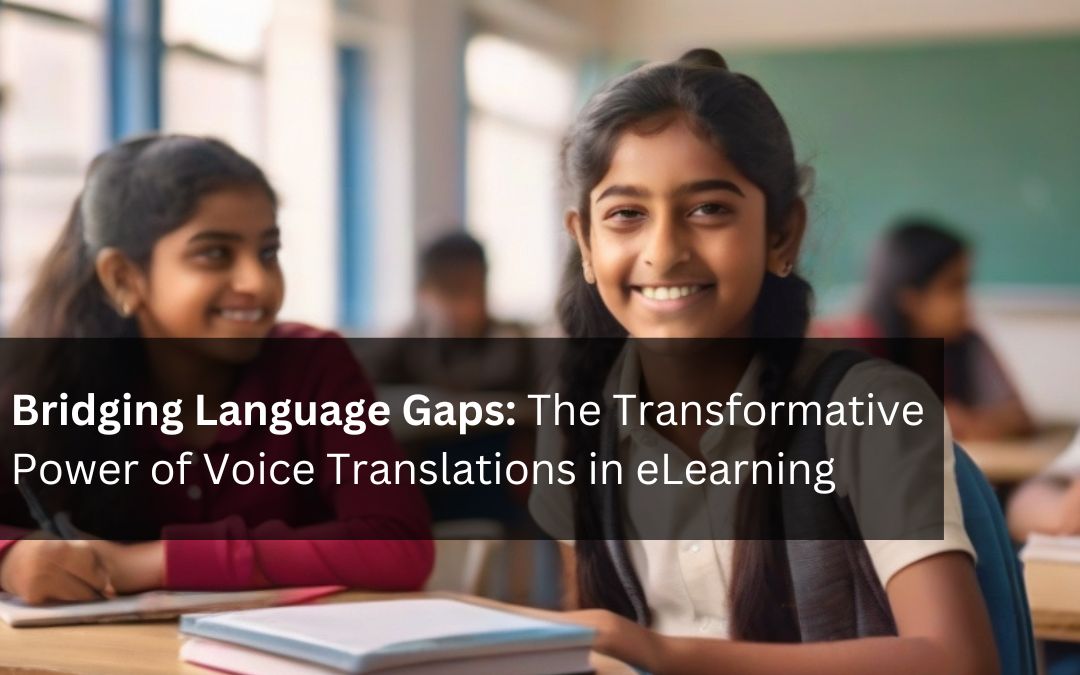In the ever-expanding landscape of eLearning, the pursuit of knowledge knows no bounds. As digital education becomes more globally accessible, language barriers can pose a significant hurdle for learners seeking to engage with diverse content. In this blog post, we’ll explore the role of voice translations in eLearning and how this technology is breaking down linguistic barriers to make education more inclusive and effective.
- Expanding Accessibility: Voice translations in eLearning open the doors to a world of knowledge for learners regardless of their native language. By providing real-time translations of course content, learners can engage with material that may have been previously inaccessible due to language differences, fostering a more inclusive learning environment.
- Enhancing Comprehension: Learning is most effective when it aligns with a student’s preferred learning style. Voice translations contribute to better comprehension by delivering content in a learner’s native language. This not only helps students grasp complex concepts more easily but also ensures that nuances and subtleties are accurately conveyed.
- Catering to Diverse Audiences: The global reach of eLearning means that courses often attract a diverse audience. Voice translations cater to this diversity by offering content in multiple languages, accommodating learners from various linguistic backgrounds. This adaptability is particularly beneficial for institutions and organizations with international audiences.
- Breaking Down Cultural Barriers: Language is intrinsically tied to culture, and voice translations in eLearning can help break down cultural barriers. By providing content in a learner’s native language, eLearning platforms can ensure that cultural nuances are understood, fostering a more culturally sensitive and enriching educational experience.
- Improving Retention and Engagement: Studies have shown that learners are more likely to retain information when it is presented in their native language. Voice translations contribute to improved retention rates by delivering content in a way that feels familiar and comfortable to the learner, increasing overall engagement with the material.
- Facilitating Multilingual Collaboration: In collaborative eLearning environments, where students from different linguistic backgrounds may work together on projects, voice translations play a crucial role. They facilitate effective communication, allowing students to collaborate seamlessly and exchange ideas without language becoming a barrier to teamwork.
- Adapting to Learning Paces: Every learner progresses at their own pace, and voice translations provide the flexibility needed for personalized learning experiences. Learners can absorb information at a comfortable pace when they can access content in their preferred language, leading to a more tailored and effective learning journey.
- Incorporating Real-world Context: Voice translations can incorporate authentic accents and pronunciations, providing learners with exposure to real-world language use. This exposure not only aids in language learning but also helps learners become more adept at understanding diverse communication styles in a global context.
Conclusion:
Voice translations in eLearning represent a transformative force in the quest to make education accessible to a global audience. By breaking down language barriers, enhancing comprehension, and fostering cultural sensitivity, this technology is shaping a more inclusive and effective educational landscape. As eLearning continues to evolve, the integration of voice translations is not just a technological advancement; it’s a step towards a more interconnected and diverse future of education.

